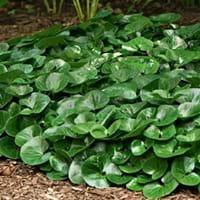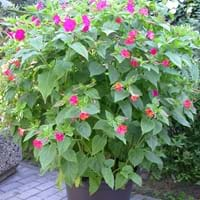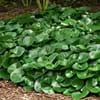Life Span
Annual and Perennial
Perennial
Type
Broadleaf Evergreen
Flowering Plants, Grass, Shrubs
Origin
Western Europe
Central America, North America
Types
Not Available
Not Available
Habitat
gardens, Lake Sides, Marshy ground, shade of upland trees, Shaded sites, Subtropical climates
Temperate Regions, tropical environments
USDA Hardiness Zone
4-8
7-10
AHS Heat Zone
Not Available
Not Available
Sunset Zone
Not Available
Not Available
Habit
Spreading
Upright/Erect
Flower Color
Green, Purple, Brown
Pink, Red, White, Yellow
Flower Color Modifier
Bicolor
Bicolor
Fruit Color
Not Available
Black, Green
Leaf Color in Spring
Dark Green
Green, Dark Green
Leaf Color in Summer
Dark Green
Dark Green
Leaf Color in Fall
Dark Green
Yellow green
Leaf Color in Winter
Dark Green
Dark Green
Leaf Shape
Cushion
Egg-shaped
Plant Season
Spring, Summer, Fall, Winter
Fall, Late Summer, Mid Summer
Sunlight
Partial shade, Full Shade
Full Sun
Type of Soil
Loam
Loam, Sand
The pH of Soil
Acidic, Neutral
Neutral, Slightly Acidic, Slightly Alkaline
Soil Drainage
Well drained
Well drained
Bloom Time
Late Spring
Early Fall, Late Summer, Mid Summer
Tolerances
Not Available
Drought
Where to Plant?
Container, Ground
Container, Ground, Pot
How to Plant?
Divison, Rhizome division
Seedlings
Plant Maintenance
Low
Low
Watering Requirements
Average Water Needs
Do not water excessively
In Summer
Average Water
Lots of watering
In Spring
Moderate
Moderate
In Winter
Average Water
Average Water
Soil pH
Acidic, Neutral
Neutral, Slightly Acidic, Slightly Alkaline
Soil Type
Loam
Loam, Sand
Soil Drainage Capacity
Well drained
Well drained
Sun Exposure
Partial shade, Full Shade
Full Sun
Pruning
Don't prune in winter, Prune in spring, Remove dead branches, Remove dead leaves
Cut back old stems to the ground
Fertilizers
All-Purpose Liquid Fertilizer
as it is a flowering plant, use high phosphorous content fertilizer
Pests and Diseases
Ants, Slugs, Snails
Aphids, Slugs
Plant Tolerance
Not Available
Drought
Flowers
Insignificant
Showy
Flower Petal Number
Not Available
Single
Foliage Texture
Medium
Coarse
Foliage Sheen
Glossy
Matte
Attracts
Insects
Bees, Butterflies
Allergy
no allergic reactions
Not Available
Aesthetic Uses
Showy Purposes
Showy Purposes, small hedge
Beauty Benefits
No Beauty Benefits
Making cosmetics
Environmental Uses
Air purification
Not Available
Medicinal Uses
Ear ache, Fever, Heart problems, Menstrual Disorders, Snakebite
anti-inflammatory, Aphrodisiac, Diuretic, Purgative, Vulnerary
Part of Plant Used
Whole plant
Flowers, Leaves
Other Uses
Not Available, Used in making tooth powder
Edible dye
Used As Indoor Plant
No
No
Used As Outdoor Plant
Yes
Yes
Garden Design
Edging, Groundcover
Container, Edging, Feature Plant, Foundation, Wildflower
Botanical Name
ASARUM europaeum
Mirabilis jalapa
Common Name
European Wild Ginger
marvel of peru, four o'clock flower
In Hindi
यूरोपीय जंगली अदरक
Mirabilis jalapa
In German
Europäische Wild Ginger
Wunderblume
In French
Wild Ginger européenne
Belle-de-nuit
In Spanish
Wild Ginger Europea
Dondiego de noche
In Greek
Ευρωπαϊκή Wild Ginger
mirabilis Jalapa
In Portuguese
Wild Ginger Europeia
Maravilha
In Polish
Kopytnik pospolity
mirabilis Jalapa
In Latin
Gingiberi Europae Wild
mirabilis Ja-
Phylum
Magnoliophyta
Magnoliophyta
Class
Magnoliopsida
Magnoliopsida
Order
Piperales
Caryophyllales
Family
Aristolochiaceae
Nyctaginaceae
Clade
Angiosperms, Magnoliids
Angiosperms, Core eudicots, Eudicots
Tribe
Not Available
Not Available
Subfamily
Not Available
Not Available
Number of Species
Not Available
Not Available
Difference Between European Wild Ginger and Mirabilis Jalapa
If you are confused whether European Wild Ginger or Mirabilis Jalapa are same, here are some features about those plants to help you choose better. Many people think that these two plants have the same characteristics, but one can see European Wild Ginger and Mirabilis Jalapa Information and learn more about it. Fertilizers required for proper growth of European Wild Ginger are All-Purpose Liquid Fertilizer, whereas for Mirabilis Jalapa fertilizers required are as it is a flowering plant, use high phosphorous content fertilizer. Hence, one should know the basic difference between European Wild Ginger and Mirabilis Jalapa if you are planning to have them in your garden to enhance its beauty.
<
Flowering PlantsImportance of European Wild Ginger and Mirabilis Jalapa
Want to have the most appropriate plant for your garden? You might want to know the importance of European Wild Ginger and Mirabilis Jalapa. Basically, these two plants vary in many aspects. Compare European Wild Ginger and Mirabilis Jalapa as they differ in many characteristics such as their life, care, benefits, facts, etc. Every gardener must at least have the slightest clue about the plants he wants to plant in his garden. Compare their benefits, which differ in many ways like facts and uses. The medicinal use of European Wild Ginger is Ear ache, Fever, Heart problems, Menstrual Disorders and Snakebite whereas of Mirabilis Jalapa is anti-inflammatory, Aphrodisiac, Diuretic, Purgative and Vulnerary. European Wild Ginger has beauty benefits as follows: No Beauty Benefits while Mirabilis Jalapa has beauty benefits as follows: No Beauty Benefits.
Compare Facts of European Wild Ginger vs Mirabilis Jalapa
How to choose the best garden plant for your garden depending upon its facts? Here garden plant comparison will help you to solve this query. Compare the facts of European Wild Ginger vs Mirabilis Jalapa and know which one to choose. As garden plants have benefits and other uses, allergy is also a major drawback of plants for some people. Allergic reactions of European Wild Ginger are no allergic reactions whereas of Mirabilis Jalapa have Not Available respectively. Having a fruit bearing plant in your garden can be a plus point of your garden. European Wild Ginger has no showy fruits and Mirabilis Jalapa has no showy fruits. Also European Wild Ginger is not flowering and Mirabilis Jalapa is not flowering . You can compare European Wild Ginger and Mirabilis Jalapa facts and facts of other plants too.



